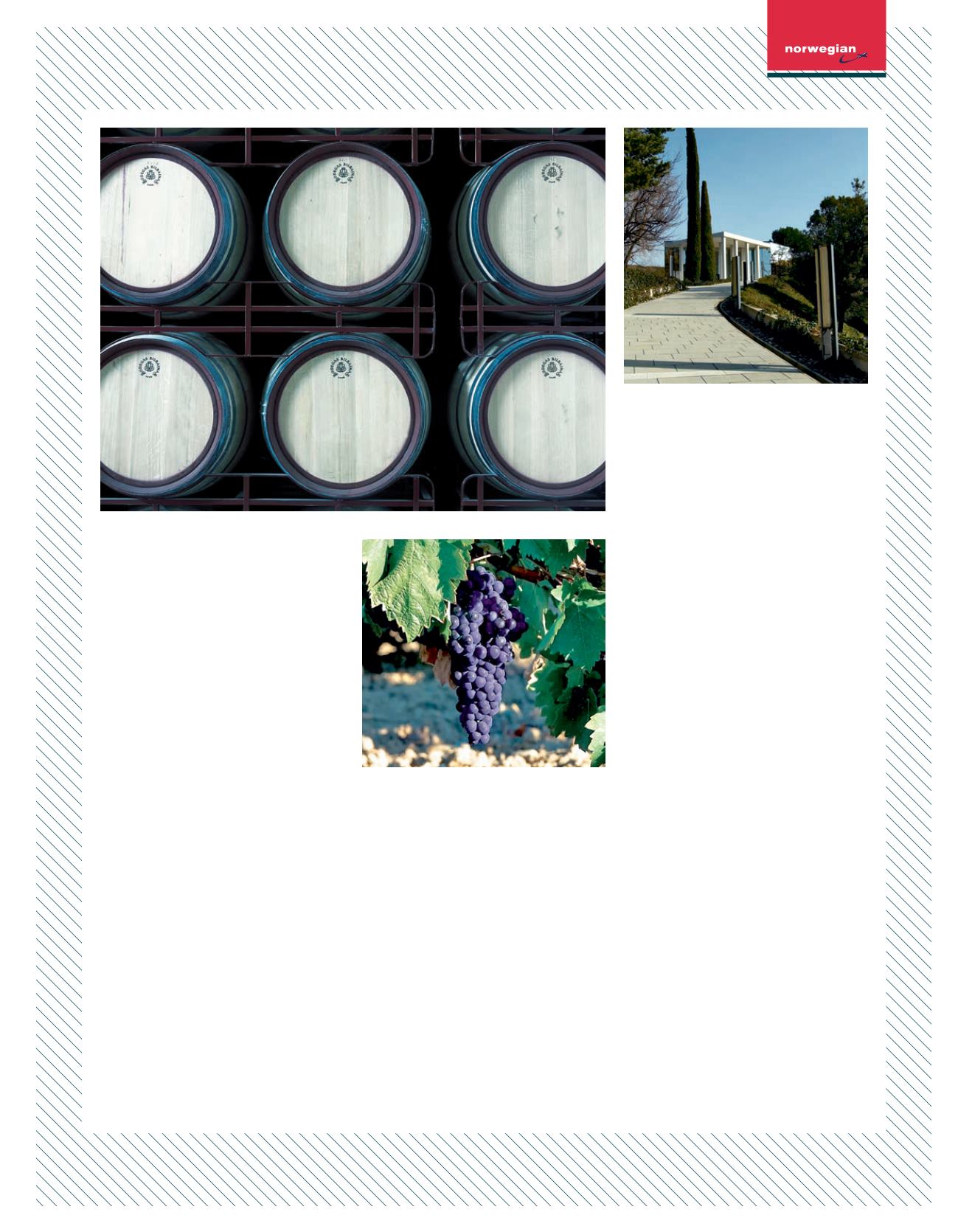
Opposite &
left
⁄
Partof
BodeigasBilbaínas’s
vineyards inLaRioja,
and labelledbarrels
Above right
⁄
Raimat’smodern
winery,designed
byDomingoTriay
in1988
very important tous tomake awine
youcanopenwherever you are–
especially to accompany eating,” he
says. “It has to reflect thehistory of
Rioja andbedrinkable, easy, friendly.”
The good summermeans thiswill be
a good year for theViñaPomal Gran
Reserva, hepredicts.
Pinilla has beenpersuaded tobottle
Viña Pomal in a PET bottle exclusively
for Norwegian in linewith the airline’s
principleof sustainability. (PET bottles
are easily recycled and are also lighter
than glass bottles, which is another
bonus.) “For somepeople it’s like,
what are youdoing putting red in
a PET bottle, but we’re trying and
tasting tomake sure it’s absolutely the
qualitywedesire.
“It took us a long time to confirm
wewanted todo this aswehad to
make surewe candeliver it toour
standards. TheRiojadenomination
is very strict aswe really care about
quality.”Hepicks uponeof the small,
plasticbottles. “Itwas difficult forme
to imagineourwholehistory in this
small bottle, but if it fits…”
Thenextmorningwe’reupearly to
complete the300km journey south
to the second vineyard, Raimat. It
was established in 1914, whenManuel
this is thebiggest single vineyard in
Europe. Thismeans it canbemanaged
as aunitwithout relyingonneighbours
pitching in; for instance, huntinghas
beenbannedon the land, leading to
the returnof foxes, eagles and falcons,
whichmeans fewer starlings feeding
on the grapes.
The vines are irrigatedby a channel
that bringsmelted snowwater down
from thePyrenees. And the very hard
soil is aboon to thewinemakers, as
it restricts the growthof thecanopy
on the vines,meaning they growwith
morecontrolled vigour.
Whenwinemakingwas reintroduced
here, it followed theNewWorld
philosophy of California at the time.
“We’reonly 100 years old– that’s
quitenew,” says technical director
JoanEsteve, oneof theworld’s top
viticulturists, as he shows us the vines.
Raimatwas the first vineyard in
Spain to introduce screwcapson its
bottles–at all threewinerieswe visit,
innovation is awatchword. “Modern
wines introducednew styles and ideas,”
Esteve says.
Headwinemaker ElisabethFigueras,
whopreviouslyworked inNewZealand,
California and Spain’s Penedès region,
agrees. “Theweather has changed,
»
Raventós bought the local castle,
whichdominates thedesert landscape.
He set up the secondmeteorological
station in Spainhere and started to
experimentwith varieties of grapes.
It’s thoughtwinemaking existed
centuries earlier in this desolateplace:
thecastle’s shield features abunch
of grapes and ahand. Raventós took
theCatalanwords to form thename
of his newbrand:
raïm
(“grapes”) and
mà
(“hand”), adding a “t” for terra
(“earth”) for goodmeasure.
Theharvest herebegan in the first
weekof August due to thecontinental
climate, startingwith thewhite
grapes,movingonto the reds. At 3,000
hectares, 2,000ofwhich areplanted,
n
/107


